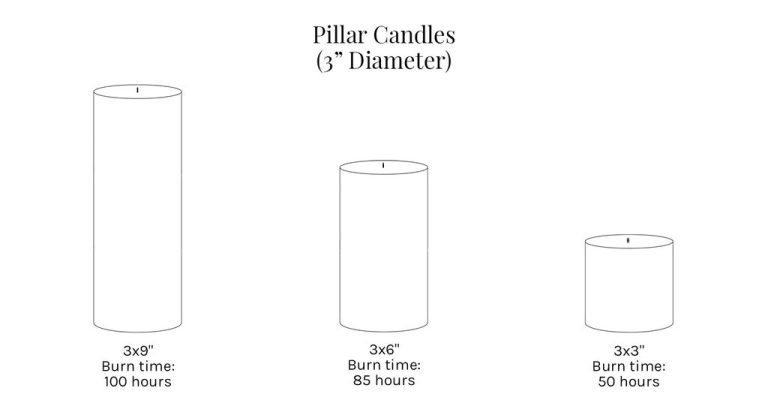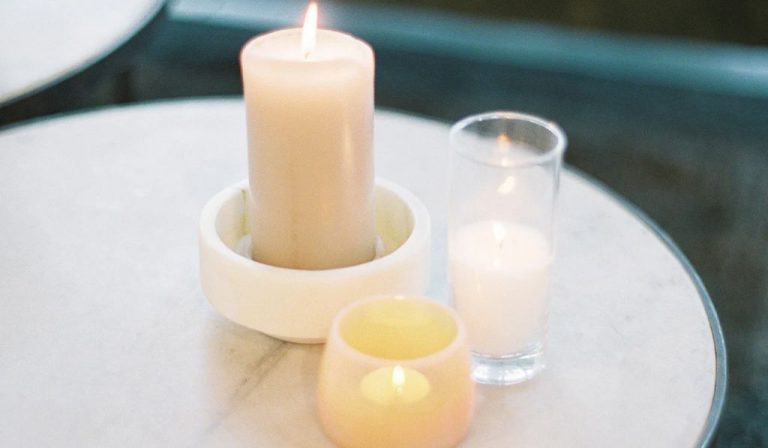Is A Candlestick The Candle Or The Holder?
Candlesticks are a common household item that most people use without thinking twice about their composition. But have you ever pondered: what exactly makes up a candlestick? Is it the candle, or is it the holder? This age-old question has sparked many debates, and the answer may not be as straightforward as you think.
In this article, we’ll explore the nuances of defining a candlestick, tracing its history, analyzing its form and function, and examining people’s perceptions. You may be surprised to find that both the candle and the holder play integral roles in comprising the candlestick.
Definition of Candlestick
A candlestick is a device used to hold a candle in place. It typically consists of a base to hold the candle, and an upright, cylindrical shaft to surround and support the candle. Candlesticks have been used for centuries to hold candles and provide illumination indoors and outdoors.
While the term “candlestick” may refer specifically to the upright candle holder, it is also commonly used to refer to the entire apparatus – both the candle and the holder together. This is because the candle and holder work as an integrated unit. The holder supports and contains the candle, while the candle provides the actual light source.
Candlesticks come in innumerable shapes, sizes and styles. They can be made of materials like porcelain, pewter, silver, brass or wood. Some candlesticks are decorative pieces of art, while others are simple and functional. However, all candlesticks serve the same primary purpose – to provide a steady base to hold a candle upright as it burns.
Parts of a Candlestick
A candlestick has two main parts – the candle itself and the holder that contains it. Here are the key components:
The Candle
The candle is the main functional part of a candlestick. It is generally made of wax with a fiber or cotton wick embedded in the middle. The wax provides fuel for the flame while the wick draws up melted wax via capillary action to provide a continuous flame as the candle burns down. Beeswax and paraffin wax are common materials used for candlemaking.
The Holder
The holder, also called the candlestick, is a container that stabilizes the candle and collects dripping wax. It may be made of glass, metal, ceramic, wood or other materials. The holder often includes a base to allow it to stand upright on a table or other surface. Some holders are decorative while others are plain and functional.
Other Parts
Candlesticks may also have additional decorative elements like shades, crystals, beads or carvings. The holder may be designed to amplify light or scent from the candle. Simple candle holders may have just a base and container while more elaborate ones incorporate multiple parts and intricate designs.
Function of the Candle
The most fundamental purpose of a candle is to provide light. Before the invention of electric lighting, candles served as one of the few portable and convenient sources of illumination. The flickering flame of a candle casts a warm glow, allowing people to see and read after sunset. Candles enabled various nighttime activities to continue even once daylight had faded.
In addition to providing practical lighting, candles also create a certain ambience or atmosphere. The soft, diffuse glow of candlelight sets a mood that is more calm and intimate than the harsh glare of electric bulbs. Candlelight is often used to create a romantic setting, and candles are strongly associated with relaxation, meditation, and spirituality. The tranquil flicker of a candle’s flame has an almost hypnotic quality that many find peaceful and soothing.
Function of the Holder
The holder is the base component of a candlestick that serves two primary functions. First, it holds the candle securely in place, preventing it from falling over as the candle burns down. The holder provides a sturdy base, often made of materials like glass, metal, or ceramic. This ensures the candle remains upright and can burn safely.
Secondly, the holder catches any melted wax that drips down as the candle burns. This prevents wax from spilling onto tables, counters, or other surfaces. The holder contains the dripping wax, keeping the surrounding area clean. As the candle burns lower, the melted wax will collect and harden in the holder.
Historical Use
Candlesticks have been used for illumination since ancient times. Archeologists have found evidence of candlesticks made of stone and clay dating back over 5,000 years ago. In ancient Egypt and Rome, candlesticks were often made of bronze, gold, and silver. The earliest candlesticks simply held the candle upright, but more elaborate designs emerged over time.
In Europe during the Middle Ages, candlesticks became larger and more decorative. Many candlesticks from this time incorporated religious symbols and imagery, as candles were commonly used in churches. The earliest candlesticks had just a simple spike to hold the candle in place. More advanced candlesticks added a drip plate to catch melting wax and a handle for easier portability.
Candlesticks evolved along with candlemaking technology. As new techniques allowed candles to burn longer and brighter, candlesticks could become taller and more stable. The materials also became more varied, with candlesticks crafted from pewter, brass, and glass. Despite changes in style and materials, the basic function of the candlestick to provide an upright base for the candle remained unchanged.
Modern Use
Candlesticks continue to be popular decorative and functional items in homes today. While no longer necessary for lighting, many people enjoy their warm glow and charming ambiance. They are commonly used to create cozy atmospheres and add a touch of elegance to living rooms, bedrooms, and dining spaces.
Scented candles in particular have surged in popularity in recent decades. People burn scented candles to perfume their homes, relax, and create calming environments. Scented candle sales have grown into a multi-billion dollar industry with large companies like Yankee Candle and Bath & Body Works producing hundreds of different scented varieties.
Candlesticks also remain popular as table decorations for special occasions and holidays. Long taper candles in holders are commonly seen on dining tables for formal events and candlelit dinners. During Christmas season, many people decorate their homes with festive candlesticks and candles.
While serving more as decoration today than as a necessary source of light, the classic candlestick continues to be a beloved household item. Its warm, flickering glow retains old-world charm that still draws people in.
Is the Candle or Holder More Important?
There are reasonable arguments for both the candle and the holder being the key component of a candlestick.
On one hand, the candle is the source of light and often the decorative focal point of the candlestick. Without the candle, the candlestick would just be an empty vessel with no real purpose. The candle is the active ingredient that fulfills the candlestick’s function of providing light. Replacing an old candle with a new one can give an old candlestick new life.
However, the holder is what enables the use of the candle in the first place. The holder stabilizes and contains the candle, while also protecting the surrounding surfaces from melting wax and open flames. The holder transforms what would otherwise be a messy freeform candle into a usable lighting device. Additionally, the holder itself is often the most visually distinctive part of the candlestick, crafted into decorative shapes with artistic flourishes. An attractive candle in a plain container doesn’t have the same appeal as a beautifully designed holder.
Ultimately, candle and holder work in partnership to create a candlestick. While one can argue the primacy of either component, it is their combination that truly matters in terms of function and aesthetics. The candle gives purpose to the holder, and the holder enables the candle to be used safely and beautifully.
Common Perceptions
Most people think of the candle as the main component that constitutes a candlestick. This is because the candle is the source of light and often the decorative focal point. The holder is viewed more as a utilitarian device that exists to stabilize and support the candle.
When we talk about a “candlelit dinner” or a “candlelight vigil”, we’re referring to the soft glow of the candle’s flame, not the vessel holding it. Candles are strongly linked to ambiance, aroma, and setting a mood. The holder is viewed more as a means to an end.
In many types of candleholders, from simple plates to ornate candelabras, the holder is relatively inconspicuous, acting as a stage for the candle. The holder becomes almost transparent, directing all focus to the candle itself. This demonstrates how most people see the candle as the salient element of the pair.
The wax, wick, and flame tend to be what we think of when visualizing a candlestick in our mind’s eye. The holder is secondary, and often goes unnoticed unless it has distinctive decorative or design elements.
So in the minds of most people, the candle is the main component that makes up a candlestick, with the holder playing a supporting role.
Conclusion
To summarize, a candlestick consists of both the candle and the holder. The candle provides illumination by burning and giving off light. The holder serves to contain the candle and allow it to stand upright. While the candle is the active component that produces the light, the holder plays an equally important role by enabling the proper use of the candle.
When determining whether the candle or the holder is more crucial to a candlestick, there are reasonable arguments on both sides. The candle is the source of the light and flame, making it the functional element. However, the holder gives structure, stability and directionality to the candle. Without the holder, the candle could not stand up on its own and would be difficult to safely use.
In conclusion, the candle and holder are interdependent and complementary components of a candlestick. Distinguishing which piece is more important than the other is somewhat arbitrary. For a candlestick to serve its purpose of providing controlled illumination, it requires both a candle to produce light, and a holder to contain and direct the candle. The two pieces only function properly when used together.




